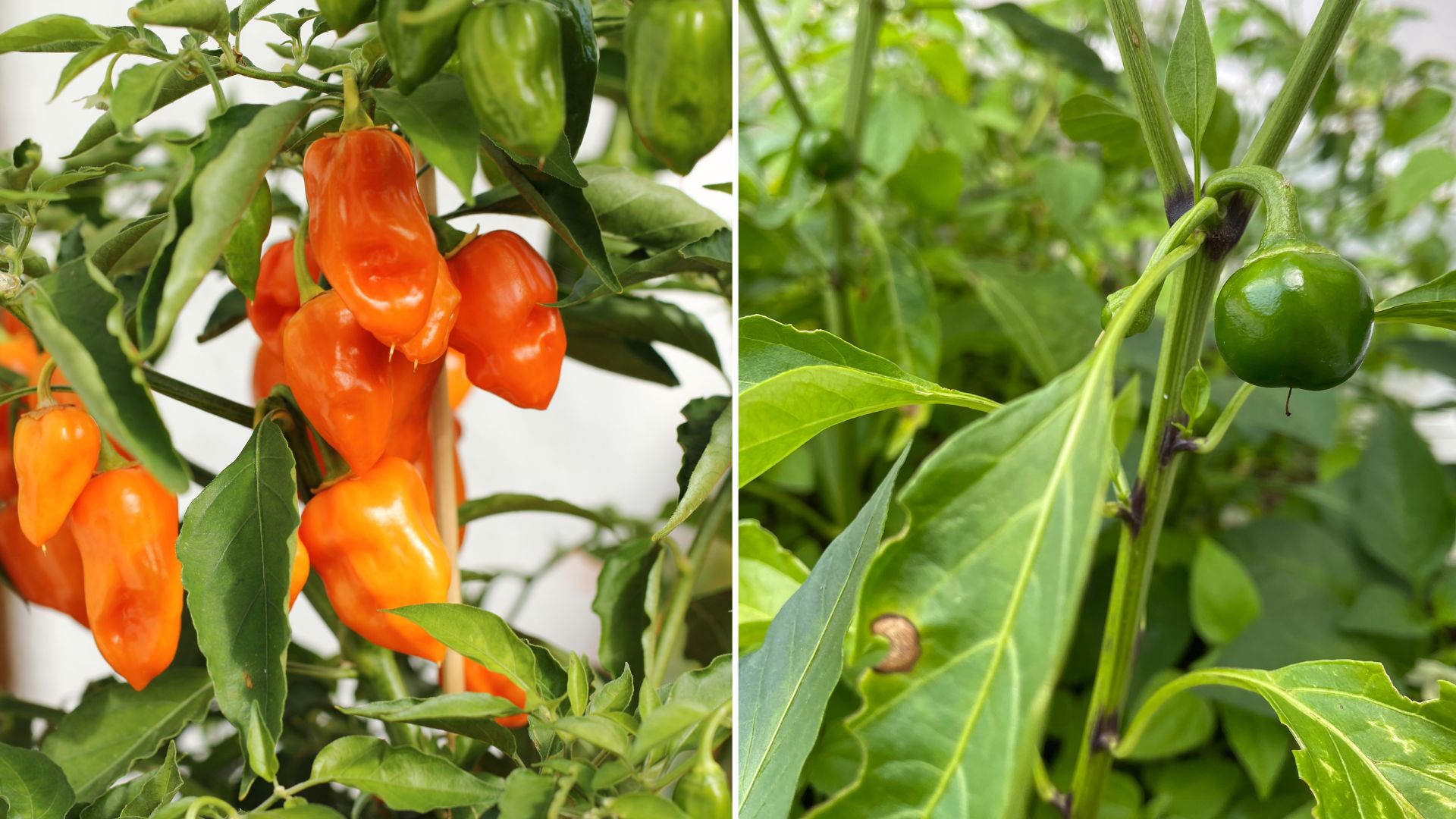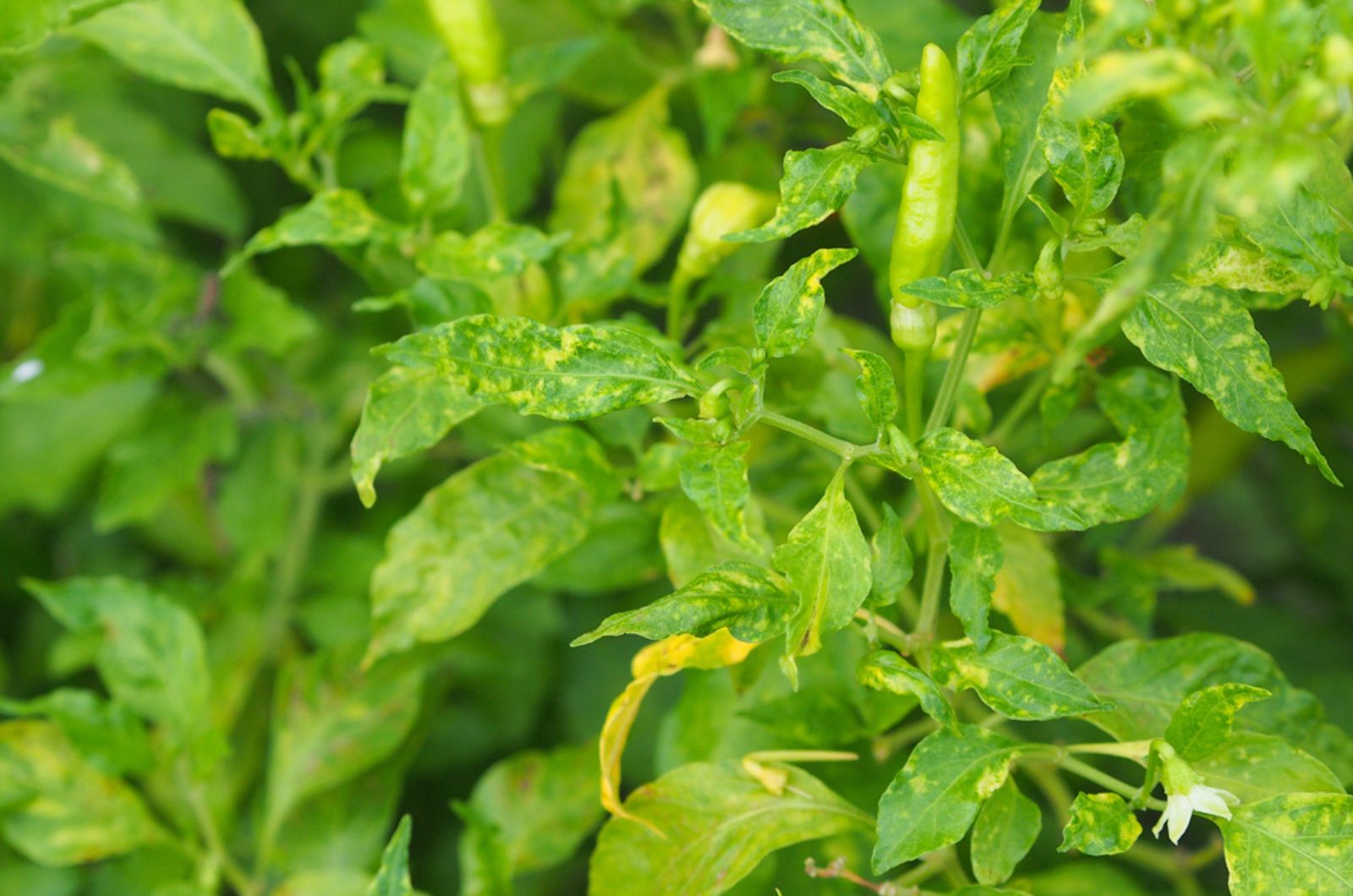Peppers are always a perfect choice for veggie gardens for two reasons. The first one is that these plants look amazing when in bloom or in their fruiting stage and the second, and everyone’s favorite, is their heavenly taste.
No matter what types of peppers you prefer, from juicy bell peppers to spicy varieties, caring for these veggies is fun and luckily, not so hard.
But problems can occur, just like in all veggies, and one of the common issues is yellowing in leaves. Don’t panic right away or be disheartened if you notice discoloration in your peppers.
I’ll show you why the leaves on your pepper plants are turning yellow and, of course, how to fix it!
No time to waste, let’s get started!
What Causes Yellowing In Pepper Leaves?
A healthy pepper plant is adorned by sturdy and deep green stems and foliage. If your peppers are flowering, it’s a sign that delicious fruits will soon appear.
What can go wrong and cause yellowing? The most common thing is overwatering and that’s the first thing you need to check. This condition is the most dangerous because it can lead to the notorious root rot, which can have fatal consequences for your peppers.
If the soil feels mushy to the touch and is dark in color, you should check the pepper roots. Healthy roots are firm and white and unhealthy ones are mushy, black or brown in color, and smell awful.
If overwatering is the culprit, the leaves of your peppers may get curly.
The second possible cause of leaf yellowing in peppers is underwatering. Dry soil restricts nutrient absorption in your peppers so they end up with a lack of nitrogen, phosphorus, potassium, and other vital nutrients these plants need to survive.
Pests and diseases are the last possible causes of pepper leaves turning yellow. Fungus or bacteria may occur in the soil and lead to leaf discoloration and deformation.
Your peppers can also be infested with ants, thrips, flea beetles, and aphids. You should inspect your veggies and if there are holes, webbing, or tiny eggs on the yellow as well as healthy leaves, infestation is most likely the cause.
How To Fix Yellow Pepper Leaves
You should know that peppers naturally drop off discolored leaves because they need energy for new growth. Any damaged or diseased leaves spend energy and may cause issues in development.
Pruning your pepper plants, i.e., assisting them in eliminating yellow leaves, is another way to fix the issue. But the key is in prevention and ensuring the best conditions for your peppers.
How To Fix Watering Issues
If the soil is overly wet, you need to allow it to dry out and then follow the perfect watering schedule. This means that you should water only when the top layer of the soil is dry.
This is especially important for potted peppers because water accumulates more easily. Simply insert your finger in the growing medium each time before watering; if it’s dry, proceed with watering. If it’s wet, wait a day or two and check again.
Never water your peppers in the middle of the day because harsh sun rays increase the water evaporation rate and lead to even more issues. Early morning is the best time to water plants, including peppers!
How To Fix Nutrient Deficiency
If your peppers lack food, the solution is actually simple: feed them. Proper nutrition will ensure an abundance of peppers so never skip this step.
Natural fertilizers are the best choice; use eggshells, banana peels, or other kitchen waste to encourage healthy growth in your peppers.
Fixing Pests And Diseases
If your peppers are suffering from bacterial leaf spot (1), you should first remove all the infected plant parts.
Always sanitize your cutting tools because the disease may spread to other peppers or even to the rest of the plants in your garden. After you remove all affected leaves, apply natural a fungicide.
If pests are the culprits, don’t use chemical pesticides immediately but rather try DIY versions. Soapy water, neem oil, or similar solutions will help you get rid of a smaller number of pests. Of course, if the infestation is severe, chemical solutions are the only option.
I also highly recommend growing pest-repellent plants in your garden, such as rosemary, thyme, and marigolds.
Yellow leaves in peppers aren’t a sign of a dying plant. Ensuring the best conditions for peppers will help you prevent all issues and if yellowing occurs, act immediately: determine the cause and fix the issue using our guidelines! Good luck!
References
1. Bacterial leaf spot of pepper. (n.d.). Extension | West Virginia University.



